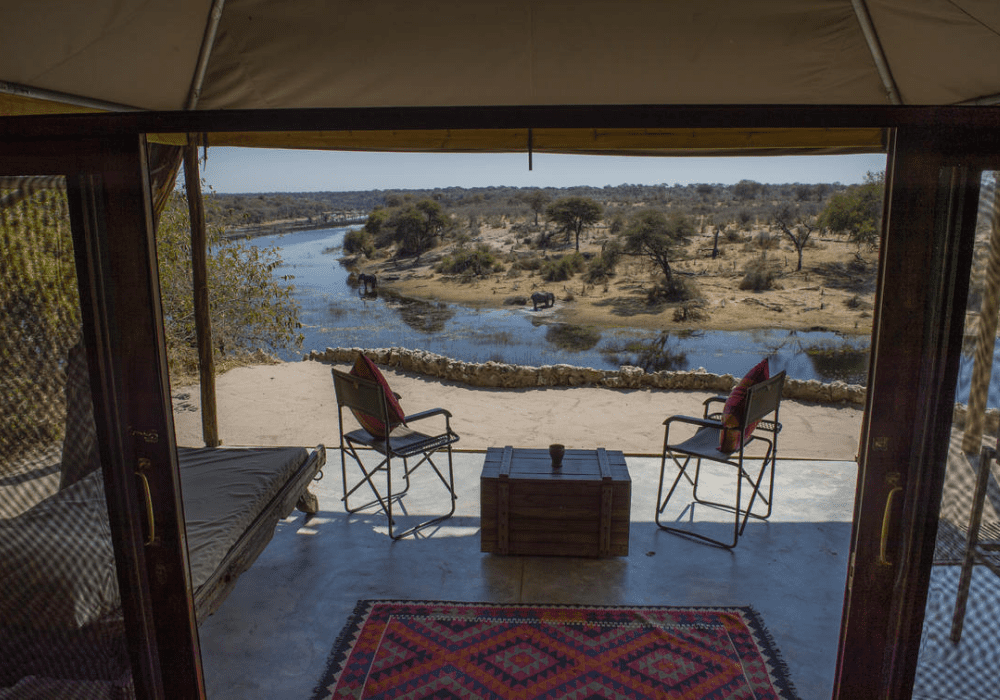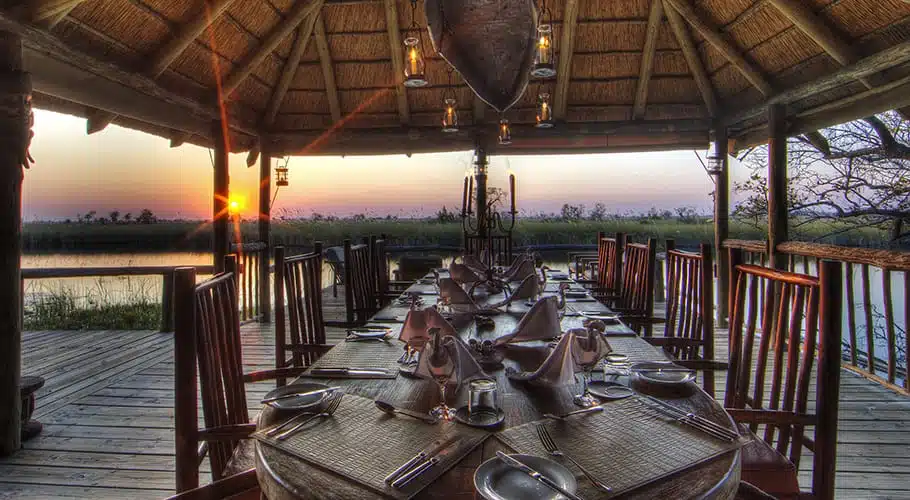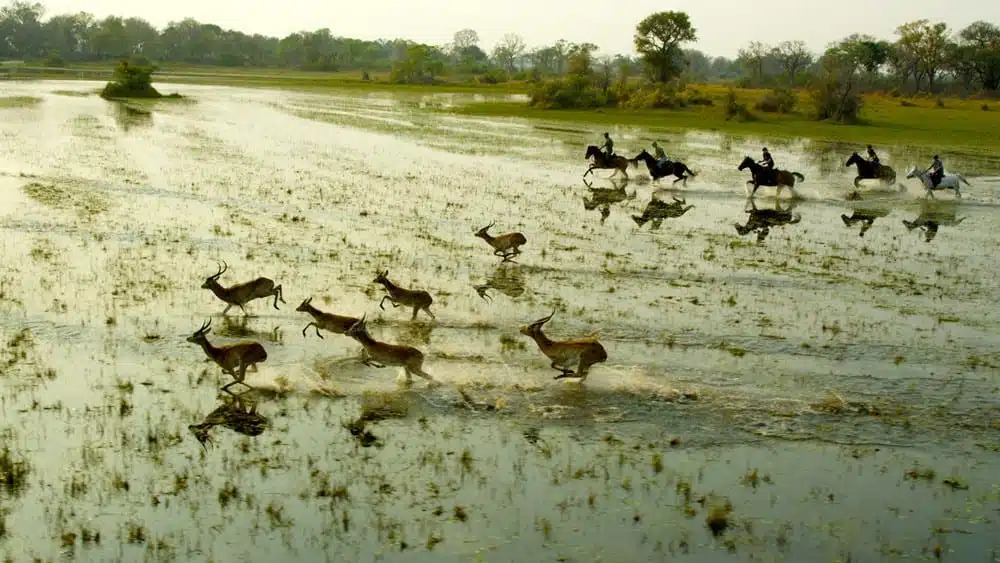BEYOND THE OKAVANGO
Botswana Safari, From Delta to Desert
When crafting a more extensive itinerary, clients often include a Botswana safari exclusively focussed upon the Okavango Delta.
While this is most certainly a fabulous reason to visit the country, it is far from the only incredible experience to be found on a Botswana safari, and this consummately diverse nation offers a gamut of landscapes, from expansive salt pans to arid grasslands, meandering waterways and striking deserts.
The homeland to one of the world’s oldest cultures, the San people, Botswana also provides rich and fascinating community connections and learning the ways of this ancient hunter-gatherer tribe is an experience second to none.
While the verdant wetlands attract an abundance of animals and wildfowl, national parks and bushlands present varied landscapes, each with their own appeal and differing inhabitants.
On a more encompassing Botswana safari, you are able to indulge in the consummate safari adventure, complete with game drives, cultural interactions, dynamic grassland wildlife viewing and the tranquillity of the Delta waterways.
One of the newest additions to the Rothschild family, Storm Keen has spent many years in Botswana, working as a travel designer and building extensive knowledge of the wonderful destinations and activities this inimitable country has to offer.
These are five of our favourite chapters to a Botswana safari, with invaluable expert insight from Storm, providing enough diversity to fulfil your entire vacation or to select from as part of a greater African journey.
THE MAKGADIKGADI SALT PANS
The eerie serenity of the Makgadikgadi Pans is bewitching. The largest salt pans in the world, spanning some 10,000 square miles (16,000km²), for a large part of the year the endless plains are sparsely populated, the white landscape punctuated with sporadic baobab trees, their engorged trunks hydrating them through the dry season. Africa’s largest zebra population wanders this striking vista throughout the year, grazing on the minimal plantlife and thriving due to the low shrubs, providing fewer places for predators to hide than the tall grasslands of the Serengeti and Maasai Mara.

Through the height of the wet season – January to March – much of the pans are impassable, but the shoulder months (April-May and October-November) see a significant increase in game and a spectacular addition to a Botswana safari. Hundreds of thousands of flamingo create vast pink clouds in the skies above the plains, chattering and waltzing in the shallow saline waters, huge herds of zebra and wildebeest migrate from the Boteti river to the pan grasslands, and hippo and waterbuck can be found in the few perennial water holes of the region.
Though by day, the endless horizons of the Makgadikgadi are breathtaking, it is at night that the true expansiveness becomes absolute. Sleeping under the stars with a San bushman as your guide and bedfellow, a campfire warming you through the nocturnal hours and the heavens expanding in every direction overhead is one of the most spectacular and memorable evenings you could possibly imagine.
STORM’S EXPERT ADVICE: In the dry season spend a minimum three-night stay, so you get to sleep out under the stars. It’s probably one of the most incredible experiences in Botswana. As a family, we used to go there on weekends and camp with nothing but a bedroll under the stars; no tents, zero light pollution – incredible. At full moon it is so light you could read a book without a torch because the moonlight reflects off the salt pans. And when there’s no moon you couldn’t see your hand in front of you and the stars are just the most spectacular you will ever see.

THE SAN BUSHLANDS
To the northwest of Moremi National Park, the San Bushlands incorporate grass plains and scatterings of rocky outcrops. One of Africa’s cradles of life, the bushlands contain the Tsodilo Hills, a UNESCO world heritage site often referred to as the Louvre of the Desert due to the 4,500 cave paintings found there.
For 100,000 years, the San people have sustained themselves in this hostile region of the Kalahari desert, and impart their wisdom upon those guests willing to venture with them across the wilderness.
For most, survival here would be challenging at best, but for the San, with their knowledge passed verbally and visually from generation to generation, there is almost always food and water to be found. Acutely attuned to the ways of the land, the San watch wildlife and read the desert like Braille, unearthing roots, insects, water and all they need to survive.

Though not really known as a game-watching region, you are still able to discover some of the fauna reflected in the ancient cave art. Kudu, duiker and steenbok can be found in the area, along with the occasional spotting of hyena and leopard.
STORM’S EXPERT ADVICE: I would definitely recommend taking a guided walk rather than an independent wander around the Tsodilo Hills to make the most of the history of the area. It’s also probably some of the only elevated landmass in Botswana that’s higher than an anthill – the rest of Botswana is completely flat – so it’s it’s quite unique in that respect as well. By having a having a guide, you will discover the history, understanding the World Heritage status and the cultural stories of the region.

CHOBE NATIONAL PARK
Bordering Zambia and Zimbabwe, Chobe benefits from the lush and abundant landscapes of the Okavango Delta, but with a greater focus on land-based game drives. Regarded as one of the best parks in Southern Africa for its concentration of wildlife and captivating waterways, Chobe is named for the river that meanders gracefully through its borders. A favoured destination for wildlife photographers, Chobe is an excellent location in which to observe the Big Five – the leopard, lion, black rhino, Cape buffalo and elephant.
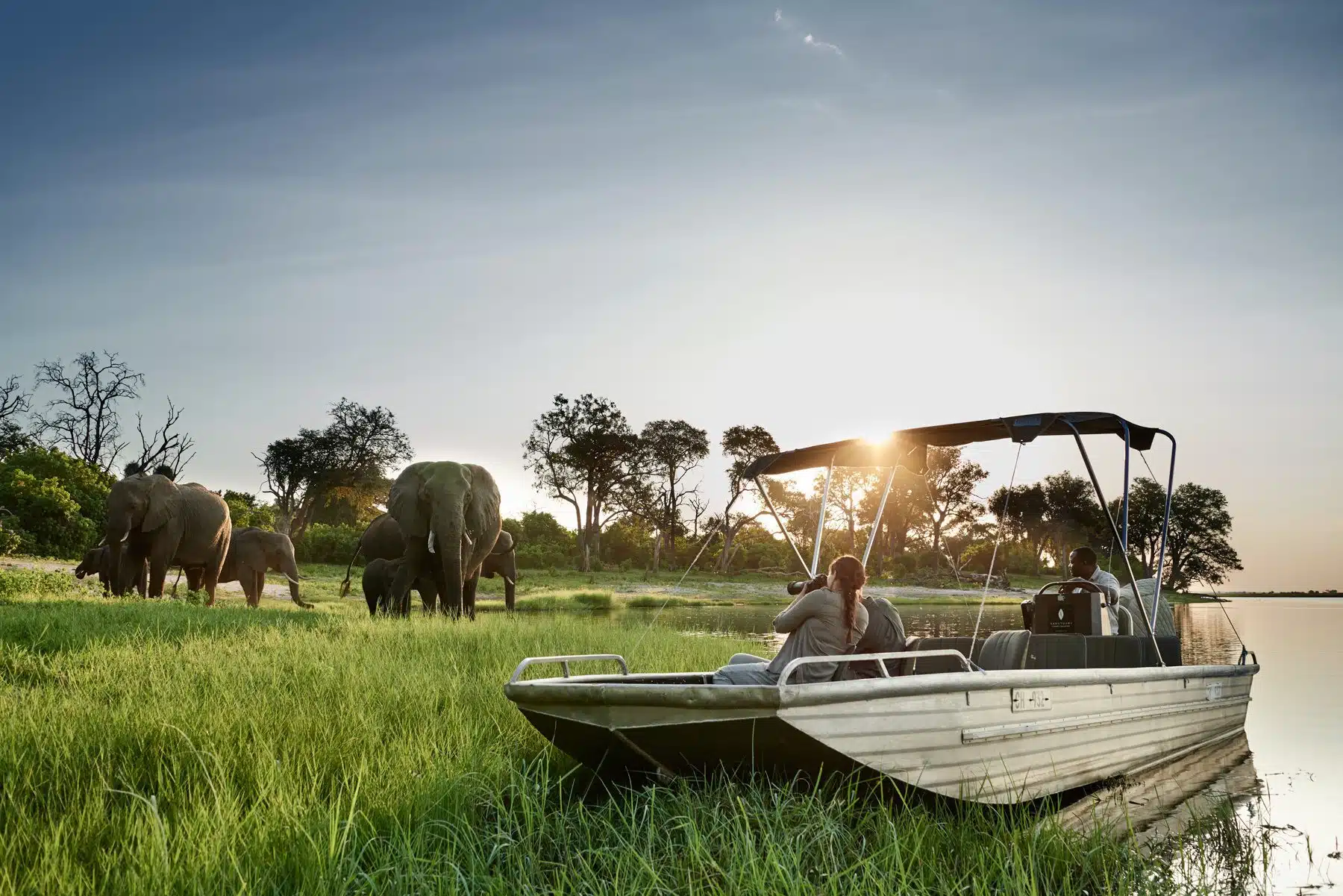
This aquatic environment is hugely advantageous, as the serene waters of the Chobe river allow you to silently drift through the park, observing wildlife in almost undisturbed peace in the absence of a rumbling vehicle engine. Though incredible for the more conventional safari experience, one of the true beauties of Chobe is the extensive river system. This allows you to take boat trips and even stay aboard floating accommodation, giving you a waterborne vantage point of the ever-changing horizons from dawn to dusk and beyond.
Sometimes referred to as ‘the Land of the Giants’, Chobe plays home to numerous larger animal species including hippo and the largest population of elephant in Africa, an estimated 120,000 individuals.
STORM’S EXPERT ADVICE: With Chobe, I would say location, location. Location is key for Chobe, so being based inside the National Park on the western ridge or on a houseboat would be your best opportunity to experience the region to the fullest extent.
MOREMI & THE OKAVANGO
Though there is so much more to Botswana than the Okavango, it is without a doubt the gleaming emerald jewel of the nation and the attraction that brings many to the country.
Accounting for one third of this vast expanse of tributaries, Moremi Game Reserve takes advantage of both the waterways and the grasslands, and even incorporates regions of dense forest. Though the Okavango Delta itself was only listed as a UNESCO world heritage site in 2014, Moremi has been a bastion of sustainability and ecotourism since the 1960s.
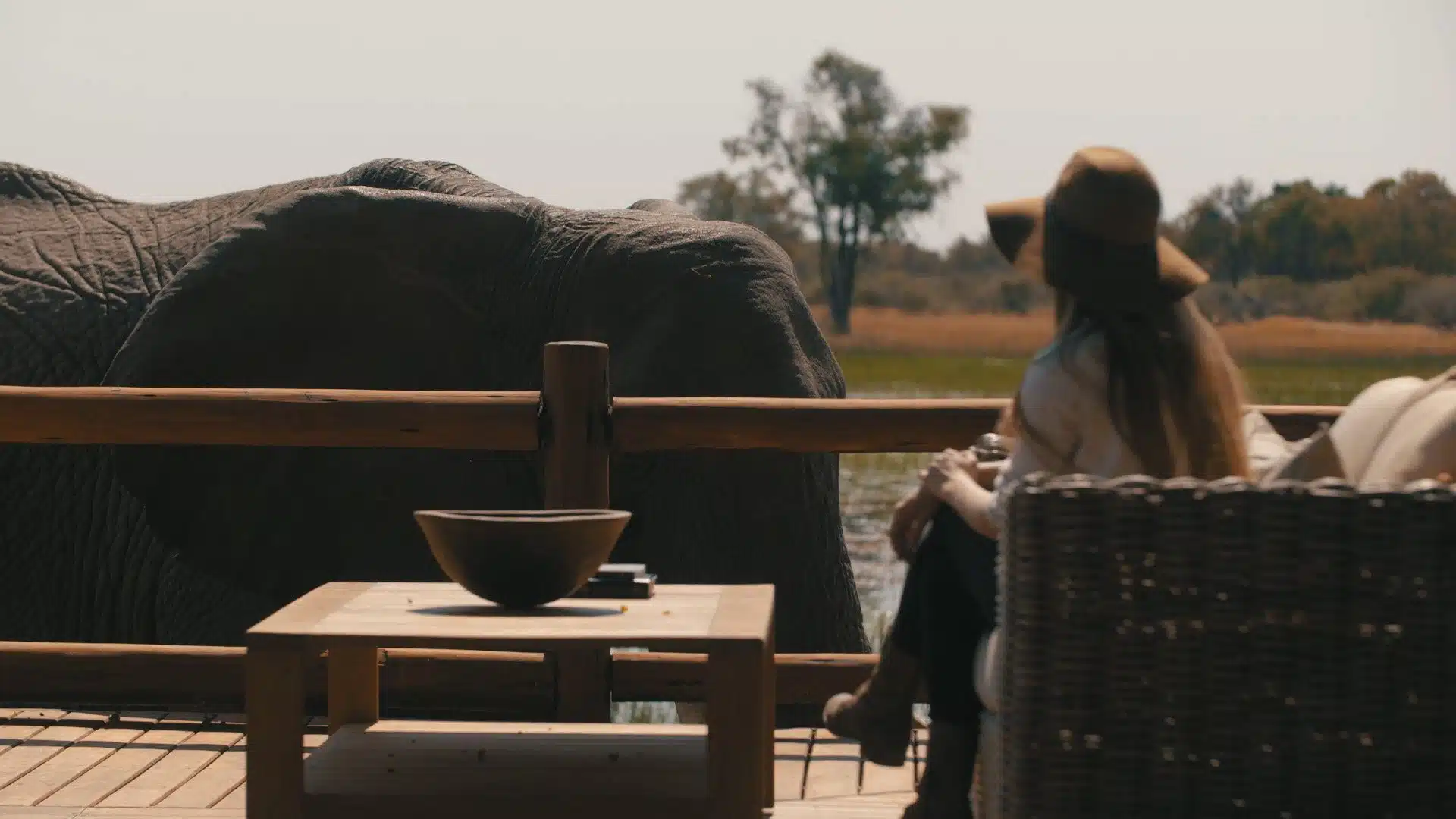
Somewhat ironically, the park is named for Chief Moremi of the BaTawana tribe who reserved the region for his private hunting. However, after his death, and more ironic still, his late wife saw the decimation that hunting – particularly by westerners – was having upon her homeland and spearheaded the protection of wildlife and establishment of the reserve.
Now, the Delta, and in particular the sanctuary of Moremi, is home to one of the highest concentrations of Africa’s endangered mammals, including white and black rhino, cheetah, lion and African wild dog.
Many of Africa’s more notable regions have specific seasons in which they flourish. Not so with the Delta and, though it benefits from a generous rainy season, there is never a bad time to visit, with wildlife changing throughout the year, though never dwindling.
Luxurious camps and lodges find privacy and solitude upon the mile upon mile of river banks, and few things compare to setting off at breakfast in a hand-carved mokoro, the traditional timber canoes of Botswana.

Yet to truly appreciate the magnitude of the Delta, it is not to the water, but to the skies that you should venture. A helicopter excursion across the Okavango is breathtaking, allowing you to explore regions often otherwise inaccessible, watching elephant, hippo and leaping herds of gazelle make their way through the waterlogged landscape. The height of Motswana indulgence is to land upon your own private island surrounded by water and enjoy canapés and sundowners as the life of the Delta continues around you in spectacular glory.
STORM’S EXPERT ADVICE: It’s hard to select just one tip because it’s such a big area and there are so many amazing experiences, so I’ll give you three: My top tip would be to experience the area on a scenic helicopter flight. It just gives a different vantage viewpoint of the Okavango and the intricate and complex waterways and how it works from the air. It’s very different from flying in between camps because they’ve got the doors off, which is an incredible photographic opportunity and then the pilot lands you on an island, you have some champagne it’s quite romantic.
Secondly, a walking Safari. Game drives are fantastic, you traverse more of the area, but walking and tracking big game on foot is quite an exhilarating experience. Lastly, sleepouts. Some properties have sleepout decks away from the main lodge and to have the sounds of the Bush coming up at night and falling asleep with nature all around you is phenomenal.
CENTRAL KALAHARI
At the heart of Botswana lies Central Kalahari Game Reserve (CKGR), an immense expanse of savannah that ranges from arid plains in the height of the dry season to rich grasslands teeming with life after the rains.
The second largest purely land-based reserve in the world, the CKGR can be brutally hostile, both in climate and its reflection of life at its most dramatic. Frequented by remarkably few visitors, the reserve comes to life from March to May as the rains subside, the grasses grow and the herbivores give birth. But where herds occur, especially with young, so too come the predators. The fight for survival is multifaceted, and while it can be shockingly emotional to see the demise of young wildebeest, springbok and eland, these tragically stunning scenes also allow the next generations of cheetah, leopard and lion to survive.


Like the Great Migration of the Maasai Mara and Serengeti, the months after the rains present the circle of life in abundance.
These are also another of the San homelands, established specifically to serve as a heritage sanctuary for the San people. Indeed, the greater part of the CKGR is closed to tourism, allowing the San to reside in peace, free from intrusion or influence to follow their traditional ways and customs. The reserve’s periphery offers a small collection of lodges and camps, the opportunity to explore its outlying regions and to discover a little of the San culture.

STORM’S EXPERT ADVICE: The Central Kalahari again is wonderful to experience at night. It is so bewilderingly expansive, and with no light pollution, the canopy of stars you can observe is breathtaking. Both the camps in the Kalahari Game Reserve have both had sleepouts, and I highly recommend taking the opportunity for at least one night of your stay.
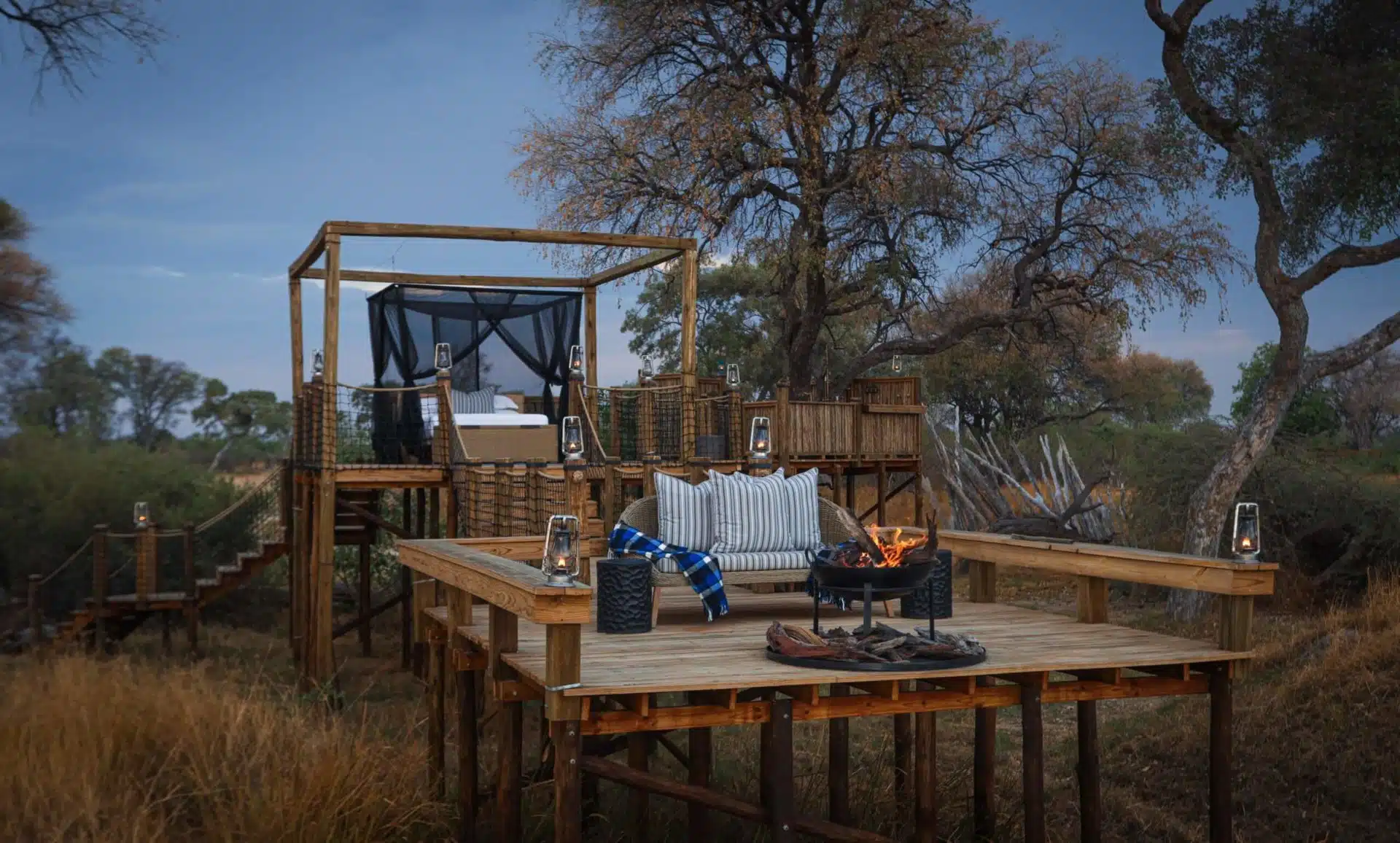
This brief glimpse into Botswana’s myriad environments and attractions does little justice to one of Africa’s most remarkable and appealing nations.
With numerous options for premium accommodation, both subtly contemporary and colonial-inspired, an abundance of wonderful wildlife and the contrast of water, grasslands and desert, Botswana is captivatingly beautiful, bewitchingly fascinating and endlessly entertaining for visitors of all kinds.
Discover Botswana today. Contact our Botswana expert and Travel Designer, Storm Keen, to begin planning your Botswana safari.
ABOUT STORM:
 Born and raised in Zimbabwe, Storm was always connected to the wild landscapes of Africa. As a new mother, she migrated with her husband to New Zealand for several years, before returning to Africa, this time to the abundant plains and waterways of Botswana. It was here that she began her life as a Travel Designer, her position also affording her the opportunity to join organisations on rhino relocations among other conservation projects. After her many years exploring and understanding Africa, its nature, its experiences and its safaris, she is impeccably positioned to provide her first-hand knowledge of Botswana, and all of Africa, to our clients.
Born and raised in Zimbabwe, Storm was always connected to the wild landscapes of Africa. As a new mother, she migrated with her husband to New Zealand for several years, before returning to Africa, this time to the abundant plains and waterways of Botswana. It was here that she began her life as a Travel Designer, her position also affording her the opportunity to join organisations on rhino relocations among other conservation projects. After her many years exploring and understanding Africa, its nature, its experiences and its safaris, she is impeccably positioned to provide her first-hand knowledge of Botswana, and all of Africa, to our clients.


